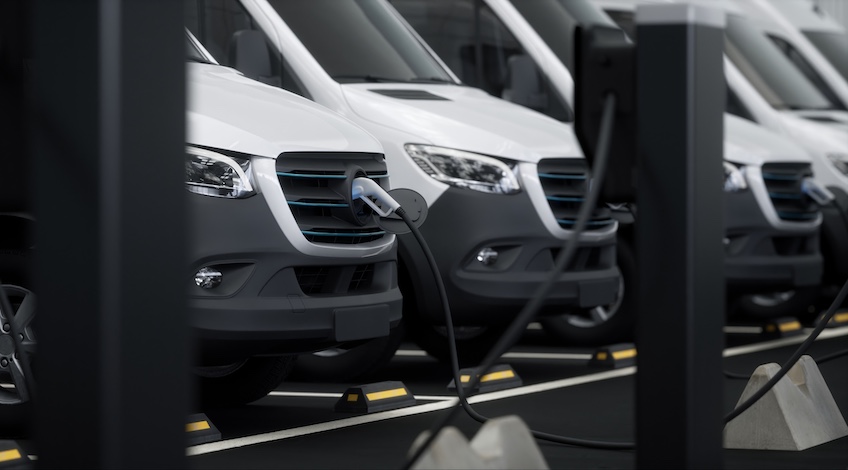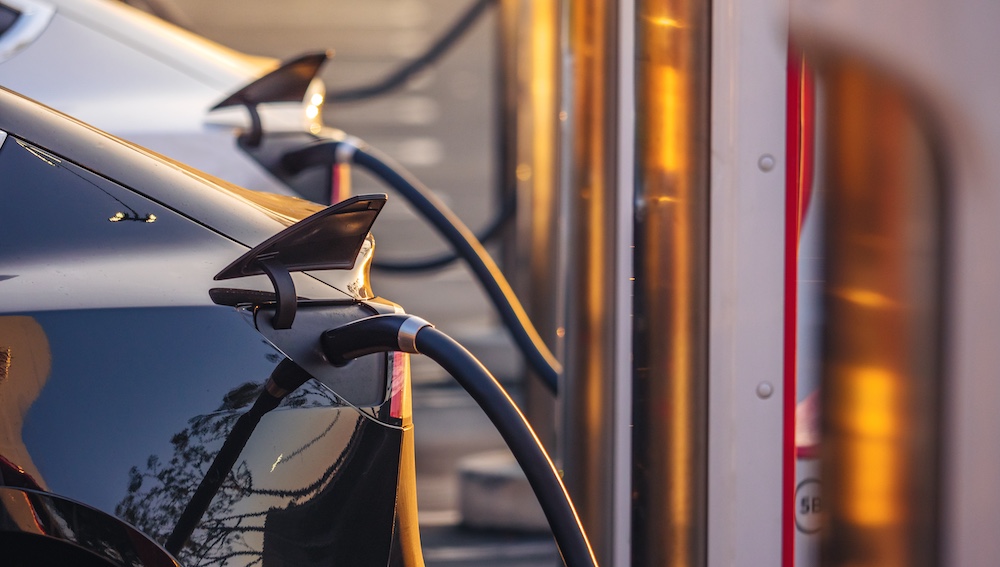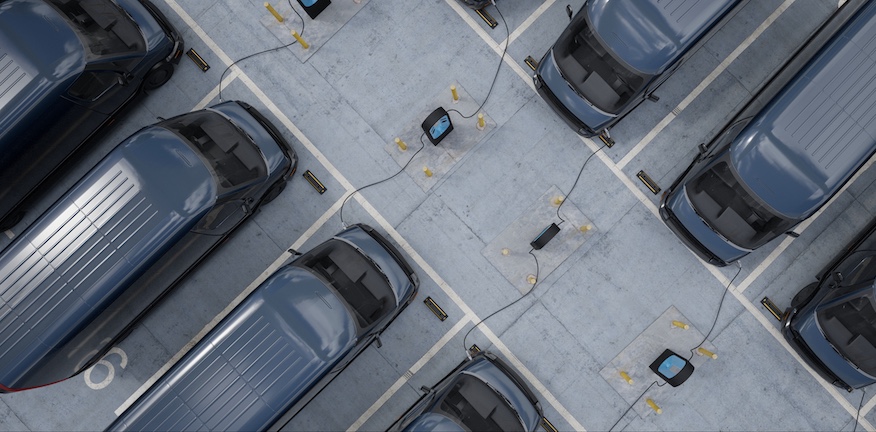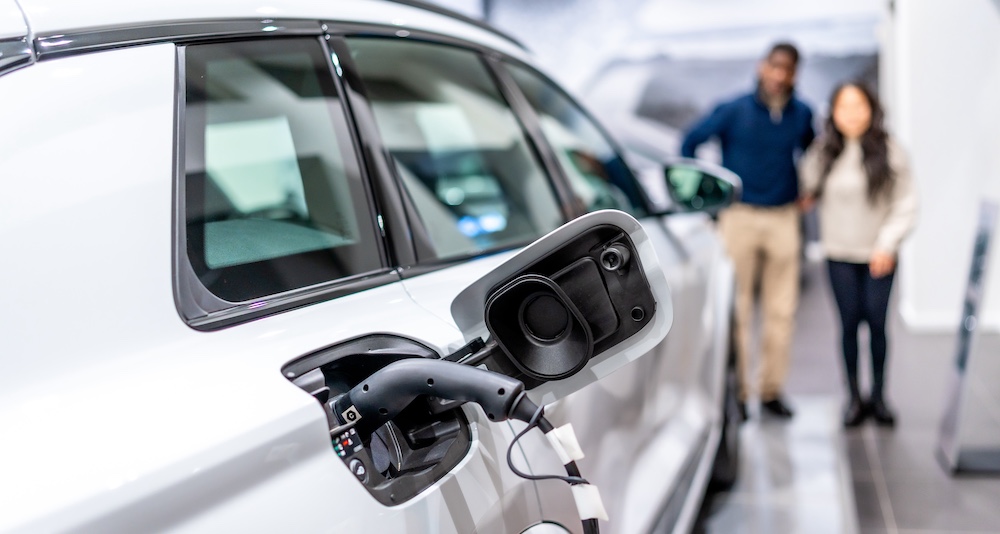Electric vehicle smart charging: Cutting fleet costs and easing grid demand
Electric vehicle smart charging uses software to control when and how EVs charge. By aligning with off-peak tariffs and managing grid demand, EV smart charging helps fleets lower costs, support renewable energy, and optimise charging efficiency across large operations.
EV adoption among fleets in the UK and Europe is accelerating fast. Vans, company cars, and shared mobility services are transitioning to electric in response to regulatory deadlines, customer demand and sustainability commitments. But this transition comes with new challenges.
Electricity costs are volatile, energy infrastructure is under pressure and charging hundreds or even thousands of vehicles can quickly become a major operational concern.
That’s where electric vehicle smart charging enters the picture. By managing when and how EVs are charged, fleets can reduce energy costs, ease strain on the grid, and move towards more sustainable operations.
For fleet managers and leasing companies, smart charging unlocks cost optimisation, strengthens resilience, and lays the groundwork for deeper integration with renewable energy and smart grids.
Looking ahead, developments such as vehicle-to-grid (V2G) could even transform parked fleet vehicles into active energy assets. But even today, the business case for EV smart charging is compelling.
What is electric vehicle smart charging?
At its simplest, electric vehicle smart charging is about using software and energy management systems to control when EVs are charged. Rather than plugging vehicles in and charging immediately, smart charging schedules top ups based on electricity demand, tariff rates and operational needs.
For fleets, this means shifting away from unmanaged charging to a system that works in harmony with the EV smart grid. At scale, this helps prevent sudden spikes in demand while also reducing costs for operators. Smart grid EV charging stations can be programmed to delay or slow charging during peak demand periods, then accelerate charging when the grid is under less pressure or when energy is cheaper.
Looking at an example of a delivery fleet with 200 electric vans. If all vehicles are charged at 5pm when they return to base, this creates a surge in demand at one of the most expensive and carbon-intensive times of the day. With smart charging, the fleet can stagger charging sessions across the night, ensuring all vans are ready for service the next morning while taking advantage of lower off-peak tariffs.
Key features of EV smart charging include:
- Load balancing – distributing charging power across multiple vehicles to avoid exceeding site capacity.
- Charging optimisation – scheduling charging when energy is cheapest and greenest.
- Energy management systems – integrating fleet charging into wider site energy use, including on-site renewables.
The cost benefits of EV fleet charging
The economics of EV adoption are often framed around upfront purchase price and total cost of ownership. But charging costs are a critical – and sometimes overlooked – variable. By adopting EV fleet charging strategies powered by smart software, operators can capture significant savings.
Lower electricity bills
Electric vehicle smart charging makes it possible to align vehicle charging with off-peak electricity tariffs. By avoiding peak demand periods, fleets can cut their energy bills by a substantial margin. In some cases, this can reduce charging costs by 20–30%.
Efficient use of energy infrastructure
Large fleets often face site energy capacity limits. Without smart charging, operators may need costly grid upgrades to support their charging needs. Load balancing avoids these unnecessary expenses by intelligently spreading power across vehicles.
Protecting battery health
Charging cycles have a direct impact on battery longevity. Rapid, unmanaged charging puts more strain on batteries, while controlled charging can extend usable life. For leasing companies and fleet operators focused on total cost of ownership, this translates into potentially higher residual values and reduced replacement costs.
Together, these benefits underline why charging optimisation should be treated as a core part of fleet strategy, not an afterthought.
Impact of EV charging on the power grid
The growth of electric mobility is good news for emissions, but it brings real challenges for energy networks. The impact of EV charging on power grid stability is already being studied by regulators and operators across Europe.
Unmanaged EV fleet charging risks creating localised spikes in demand. This can drive up grid costs, increase carbon intensity (since peak demand is often met with fossil fuels), and even cause supply issues.
Smart charging addresses these risks by smoothing demand. Instead of hundreds of EVs charging at once, energy management systems stagger usage, aligning it with grid capacity and renewable generation.
For example, when peak demand hits in the early evening, charging can automatically pause until later in the night. This not only reduces grid pressure but also accelerates renewable energy integration by matching EV demand with clean supply.
Looking ahead, the potential is even greater. Vehicle-to-grid (V2G) technology would allow fleets to discharge stored energy back into the grid during peak times. In practice, this could turn a depot full of electric vans into a distributed energy resource, supporting the grid while generating revenue for the operator. While still emerging, V2G pilots across Europe suggest this could be a transformative step in the relationship between fleets and the energy system.
Preparing your fleet for a smart charging future
For fleet managers, the shift to smart charging is a competitive priority that can be actioned today. The following steps can help build a future-ready charging strategy:
- Collaborate with energy suppliers and infrastructure partners – Understand local grid constraints, negotiate tailored tariffs, and explore renewable energy contracts.
- Invest in smart charging software – Use platforms that allow scheduling, monitoring, and reporting of charging sessions. This provides real-time visibility of costs, carbon impact and fleet readiness.
- Optimise load management – Ensure site charging capacity is maximised through balancing rather than costly infrastructure upgrades.
- Embed sustainability metrics – Smart charging not only saves money but also supports ESG reporting by lowering emissions intensity per mile.
- Plan for scalability – Charging needs will grow as fleets electrify further. Build strategies that can adapt as vehicle numbers increase and V2G becomes mainstream.
By treating smart charging as a strategic enabler, rather than just an operational necessity, fleets can lower costs today while positioning themselves for tomorrow’s opportunities.
Conclusion: Smart EV fleet charging
The case for electric vehicle smart charging is clear. For fleets across the UK and Europe, it offers a practical way to cut costs, strengthen operations and reduce environmental impact. By shifting charging away from peak demand and integrating with renewable energy, fleets can save money while supporting the wider energy system.
Beyond immediate savings, smart charging represents a step towards a more connected, sustainable transport future. With innovations like vehicle-to-grid on the horizon, fleets that adopt smart charging now will be best placed to lead in the years ahead.
Cox Automotive will continue to provide insights into EV operations, charging strategies and sustainability. For more practical advice on optimised charging, explore our EV charging best practice guide and visit our EV Hub for further insights.
Electric vehicle smart charging FAQs
What is electric vehicle smart charging?
Electric vehicle smart charging uses software and energy management systems to schedule charging at the best time for grid demand, tariff rates and fleet needs. Helping operators lower costs, reduce carbon impact and prevent pressure on the grid.
How does smart charging reduce fleet operating costs?
By charging during off-peak hours, fleets benefit from cheaper electricity rates and avoid expensive grid upgrades. EV smart charging also helps balance load across multiple vehicles, cutting costs by up to 30%.
What is the impact of EV charging on the power grid?
Unmanaged EV charging can increase peak demand and cause strain on the grid. Smart charging however, helps smooth energy usage and support renewable energy integration, allowing for a stable and sustainable power network.
How does smart charging support battery health and vehicle lifespan?
Smart charging reduced thermal stress and prevents overcharging, which helps maintain battery health and long-term fleet reliability. These controlled systems optimise charging speed and monitor state of health automatically.
What role does vehicle-to-grid (V2G) play in EV smart charging?
Vehicle-to-grid (V2G) technology allows electric vehicles to return stored energy to the grid. For fleet operators, this generates new revenue streams while supporting grid resilience. Essentially turning parked vehicles into energy assets.







